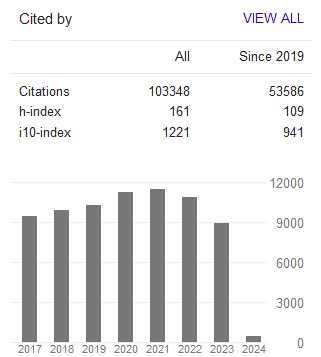The Impact of Physical Environment and Regional Image on Tourist’s Experiential Values and Feelings: An Example of Nanzhuang Area in Taiwan
- Shwu-Ing Wu
- Li Chia Huang
Abstract
With the booming global tourism activities, many countries around the world are actively promoting regional tourism. Thus, understanding the tourists’ needs is important in developing tourism promotion strategies. With Nanzhuang Township, Miaoli County as the case study, this paper discusses the influence of the two independent variables, the tangible physical environment and the intangible regional image, tourists’ experiential value and the feelings after tourism. This study conducted a questionnaire survey on tourists who have visited Nanzhuang Township, Miaoli County, by convenience sampling, in order to construct the model of regional experience marketing effect. A total of 743 effective samples were retrieved. After analysis by structural equation modeling (SEM), it is found that: (1) the physical environment has a positive and significant influence on the tourists’ experiential value; (2) regional image has a positive and significant influence on the tourist’s experiential value; (3) the experiential value has a positive and significant influence on satisfaction; (4) satisfaction has a positive and significant influence on trust and commitment; (5) trust has no significant influence on commitment. Regarding the two independent variables, regional image has more influence. In addition, after comparing the group models by clustering with the high and low frequency of the number of visits, it is found that there are some differences between the high frequency group and the low frequency group, where the regional image of the high frequency group has a greater influence on the experiential value and the physical environment of the low frequency group has a greater influence on the experiential value. The findings can serve as reference for the local government and the tourism operators to develop regional marketing strategies.- Full Text:
 PDF
PDF
- DOI:10.5539/ijbm.v10n11p94
Journal Metrics
Google-based Impact Factor (2023): 0.86
h-index(2023): 152
i10-index(2023): 1168

Index
- Academic Journals Database
- AIDEA list (Italian Academy of Business Administration)
- ANVUR (Italian National Agency for the Evaluation of Universities and Research Institutes)
- Berkeley Library
- CNKI Scholar
- COPAC
- EBSCOhost
- Electronic Journals Library
- Elektronische Zeitschriftenbibliothek (EZB)
- EuroPub Database
- Excellence in Research for Australia (ERA)
- Genamics JournalSeek
- GETIT@YALE (Yale University Library)
- IBZ Online
- JournalTOCs
- Library and Archives Canada
- LOCKSS
- MIAR
- National Library of Australia
- Norwegian Centre for Research Data (NSD)
- PKP Open Archives Harvester
- Publons
- Qualis/CAPES
- RePEc
- ROAD
- Scilit
- SHERPA/RoMEO
- Standard Periodical Directory
- Universe Digital Library
- UoS Library
- WorldCat
- ZBW-German National Library of Economics
Contact
- Stephen LeeEditorial Assistant
- ijbm@ccsenet.org
